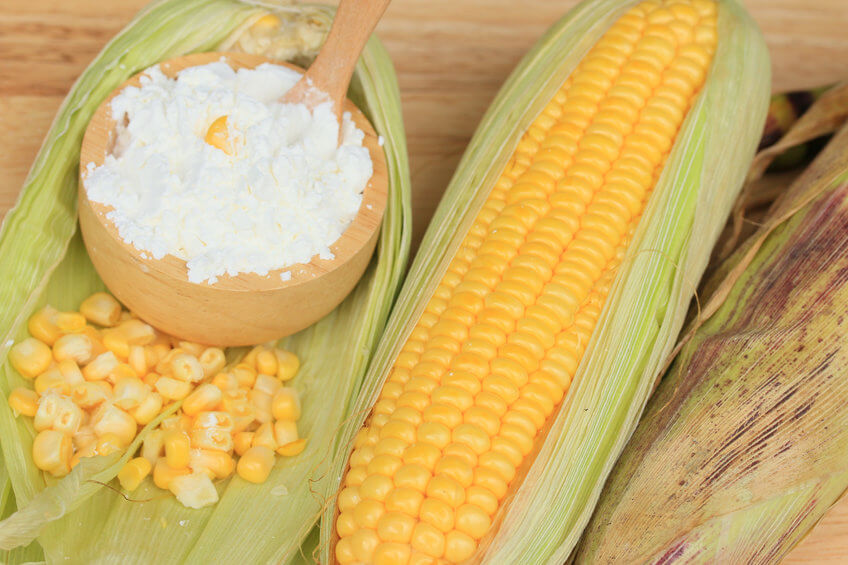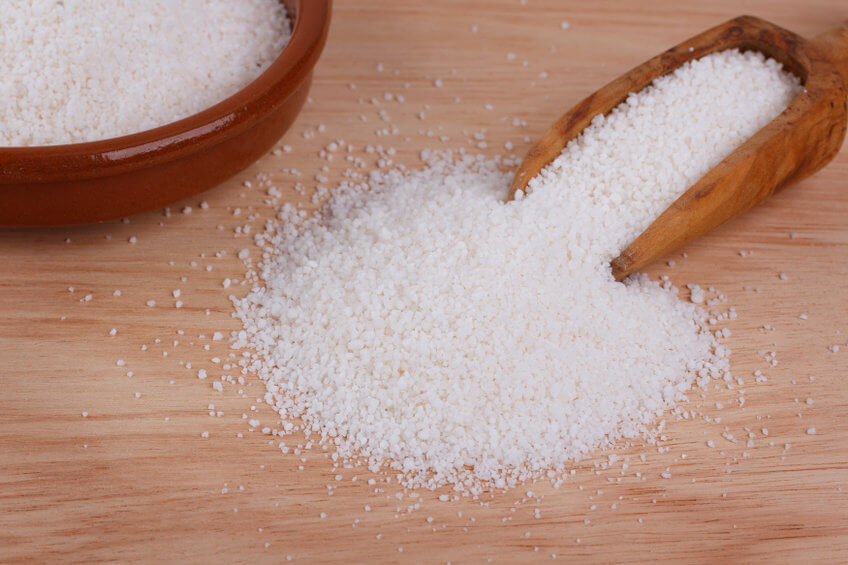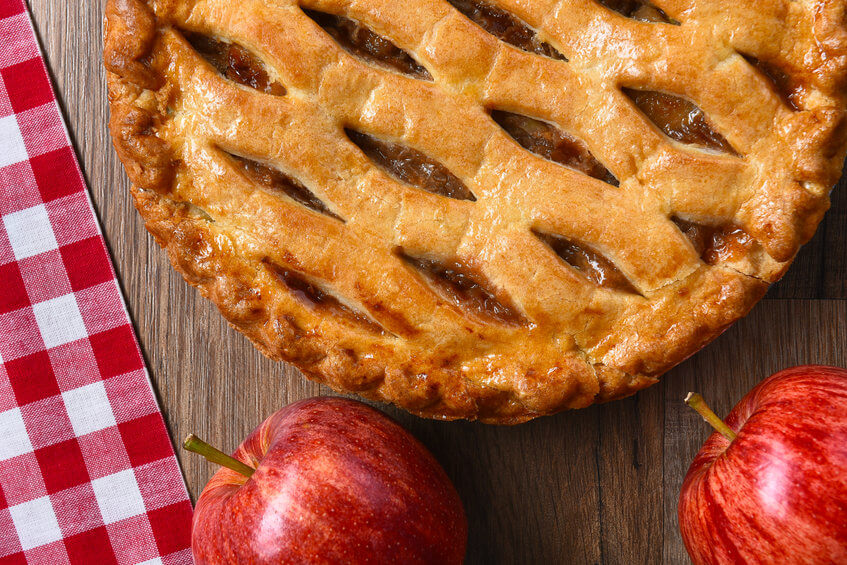Cornstarch and tapioca flour are both very popular for many different reasons. They are commonly used by cooks and can be found in households all around the world. In this article we look at cornstarch vs tapioca flour and see how best to use them.
The most common differences of cornstarch and tapioca flour are way they are sourced, the way they dissolve, how they affect the appearance of food, and their tolerance levels to heat.
What Is Cornstarch?

Just like you would guess, cornstarch is made from corn.
The kernels are soaked, and the endosperm is removed. The starch is then extracted and dried which form a white powder that has no aroma or taste.
Cornstarch is gluten free which makes it very versatile. It is used to thicken foods such as gravies, soups, pie fillings, and it makes a nice light crispy coating for deep fried, air-fried or oven baked foods.
Cornstarch is also handy to have outside the kitchen. It can be used as a dry shampoo, a deodorant, an ointment on minor scratches and skin irritations, a stain remover, even a polisher. The possibilities are almost endless.
What Is Tapioca Flour?

Tapioca flour, also know as tapioca starch comes from the starchy pulp of the cassava root.
The cassava root is part of the tuber family. It is made by extracting the pulp which is washed and spun until it is pure starch. The starch is dried out which creates a fine white powder.
Tapioca flour is also gluten free. It is widely used in baked goods as it adds a nice fluffy texture that is hard to resist. And even though there is a sweetness to tapioca flour, it is so mild that it can also be used for breads and other savory dishes. Going from food to clothes, tapioca flour makes a great fabric starch.
Cornstarch vs Tapioca Flour
Some key differences to keep in mind:
- Cornstarch is grain starch while tapioca flour is a root starch.
- Cornstarch can be used at higher temperatures for longer periods of cooking time.
- Cornstarch will dissolve clearly in liquids so it will not change the appearance of a dish. It can be added at the beginning of cooking and will nicely thicken soups, broths, or pie fillings.
- Tapioca flour is better suited for lower temperatures and less cooking time. It will quickly thicken a pudding or a soup. It also absorbs liquids quickly, and thus cooks will use it to improve the texture of some foods that may otherwise turn soggy.
- Tapioca flour does not completely dissolve and can leave an opaque milky look to food. Keep that in mind if the end appearance of a dish important.
Nutrition
When it comes to nutritional value, there is not much difference between cornstarch vs tapioca flour. The differences are so small that one doesn’t seem better than the other based on nutritional information:
- To demonstrate, the following information is based on 1 ounce (28 grams) serving.
- Cornstarch has about 108 calories while tapioca flour is around 94 calories. Cornstarch has 26 g of carbohydrates and tapioca flour is almost identical at 25 g.
- Cornstarch has less fiber at 0.3 g compared to tapioca flour at 1.9 g.
- For the same 1 ounce (28 grams) serving cornstarch has 0.6 mg calcium while tapioca flour has 0 mg.
- They both have trace amount of iron, cornstarch at 0.1 mg and tapioca flour at 0.3 mg. And both have a trace amount of potassium, cornstarch at 0.9 mg while tapioca flour comes in at 0 mg.
Baking
Is there a difference in cornstarch vs tapioca flour when it comes to baking? The answer is yes, and it is beneficial to know the difference between them to achieve the best results.
Cornstarch is a great choice to thicken puddings and pie fillings. It creates more of a crumbly texture when used in cakes, cookies, and shortbread.

It should be noted that cornstarch should be avoided in recipes using citrus as that can cause it to break down. It is also best not to freeze baked goods with cornstarch as it might develop a gummy texture when thawed.
Tapioca flour also works very well baking gluten free goodies. It helps the ingredients to bind together and creates a light airy, almost spongy texture to baked goods. If recipes call for citrus, tapioca flour is the better choice. And it makes pie crusts nice and crispy.
Tapioca flour will hold its consistency when frozen and thawed.
Cost & Availability
As far as cost when looking at cornstarch vs tapioca flour, the prices for both vary depending on the brand, where you buy it, whether you buy it in bulk or packaged, and whether you choose organic and/or non-GMO. There are countless brands and sizes to choose from. As you would expect, the larger the amount you buy, the less expensive it is.
For the sake of comparison, if we take a popular brand of cornstarch and tapioca flour that are not organic, they both run very close to $1.00 for 100 grams or 3.5 ounces give or take a few cents.
As for availability, most if not all large cities will have both readily available at grocery stores, health food stores and big box stores. Availability may decrease the smaller the city and the more remote the location, however both can be purchased online from various sources.
Conclusion
In conclusion, cornstarch and tapioca flour are both solid gluten-free alternatives to wheat flour and all purposed flour. They are both have different advantages when used in cooking and baking. And as we saw, both go beyond the kitchen to benefit some of your beauty and laundry needs. So, go ahead and stock your pantry with both.

